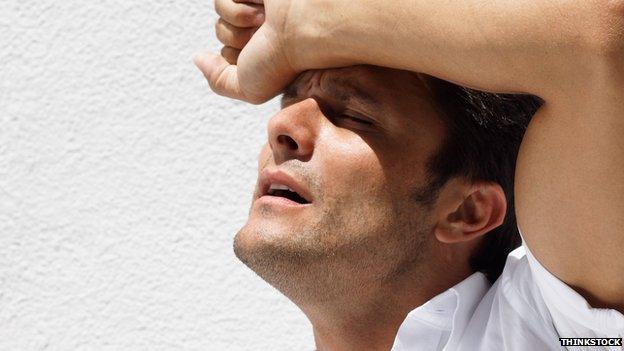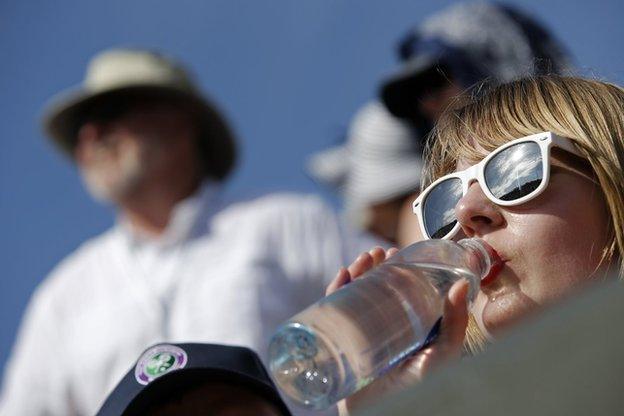Heatstroke - the heatwave killer
- Published

Temperatures are rising across Europe and while the sun is out so are the health warnings.
Heatwaves can have a profound effect on the body beyond sunburn - it can be deadly.
The earliest, and relatively mild, heat-related issues are:
heat cramps caused by dehydration (it's often linked to exercise)
heat rash
heat oedema which mainly takes the form of swollen ankles
The more serious problems include heat exhaustion, which develops into fatal heatstroke.
Sick and faint
Sweating is the main method your body uses to keep cool as temperatures rise.
But all the time you're sweating you're also losing salts and water and it leads to a drop in blood pressure.
Symptoms of heat exhaustion are similar to being dehydrated - feeling sick, faint and sometimes shock.
Treatment should be relatively easy at this stage - drinking plenty of water and moving to a cooler place.
But things can become much worse and develop into heatstroke.
Eventually the body's ability to sweat shuts down as fluid levels become dangerously low.
Someone who once looked bright pink and sweaty becomes pale with hot dry skin.
With no way of cooling down, core body temperature can soar above 40C (it is normally 37C).
Symptoms at this stage include confusion, disorientation, convulsions and falling into a coma and can culminate in organ failure, brain damage and death.
Suspected heatstroke should always be considered a medical emergency.
Thunderstorms
The heat can also exacerbate a wide range of other health conditions.
The extra strain on the heart because of changes in blood pressure can increase the risk of heart attacks and stroke.
There is even "thunderstorm asthma" as the number of attacks increases after some thunderstorms, although the reason is not entirely clear.

Spectators at the Wimbledon tennis tournament have been advised to drink plenty of water
The point at which heat becomes a problem varies widely, as there are differences between people and countries.
People who struggle to control their temperatures - including babies, the elderly and those on some medications - will be affected at lower temperatures.
Dr Angie Bone, the head of extreme events and health protection at Public Health England, says there are also big differences between countries.
She told the BBC: "If you look at temperature and mortality - even within England - the threshold we start to see increases in deaths is different in the south and north of the country.
"If you're regularly exposed to these temperatures then your body acclimatises.
"But also how countries organise buildings and cities has an effect - compare ours with the Mediterranean. They have more shade, external shutters on buildings and air conditioning as they're used to these temperatures."
- Published1 July 2015
